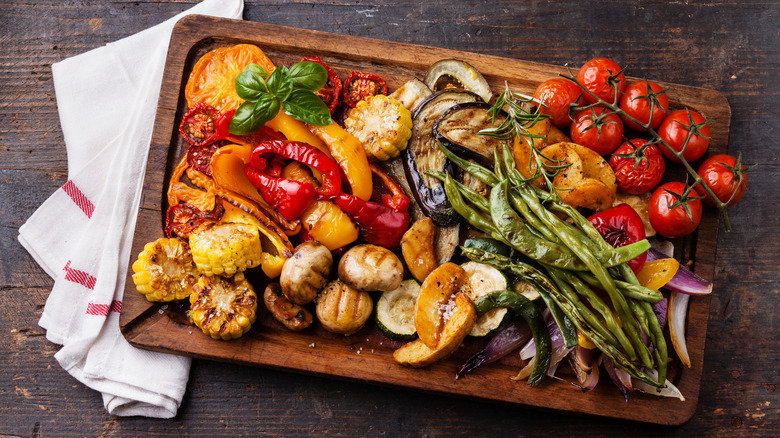It’s hard to resist the call of the grill whenever summer rolls around, but when planning a proper barbecue, don’t forget to add veggies to your roster of grilled dishes. Grilling vegetables properly brings out their natural sweetness and adds a layer of smokiness that makes charred veggies the perfect accompaniment to grilled meat.
Aside from vegetable’s proper placement on the grill, slicing them into the right thickness is crucial. Cut them into pieces that are around ½-inch thick so they get cooked through and don’t fall through the grates. To know how to slice them, consider the size and shape of the vegetables. Longer ones like eggplants, yellow squash, and zucchini must be cut lengthwise first before chopping them down into ½-inch-thick rectangles. Bell peppers and onions must be sliced in quarters, with the former seeded and the latter peeled. Onions can also be skewered so their layers don’t fall apart. Large mushrooms must have the stems removed and the heads cut into halves while broccoli must be cut into similar-sized florets.
Certain produce, however, that are already on the smaller or slender side are best left whole, such as snap peas and cherry tomatoes. Cherry tomatoes, specifically, are ideally bought while still attached to the vine so you can place everything on the grill and use the stem to flip them. Corn can be either sliced or grilled whole, depending on your taste. As for asparagus, cut off the thicker, tougher ends before putting them on the grill.
Season the vegetables before cooking for maximum flavor

Just as with meat, seasoning raw vegetables coaxes out their taste as they cook – marinating vegetables even results in a bolder-flavored salad. Avoid the seasoning mistake of not giving the marinade enough time to do its magic. Coat the vegetables with olive oil and a sprinkling of salt and pepper and let the marinade sit for 15 minutes. More delicate ones like tomatoes and okra must be marinated for no more than 10 minutes so they don’t turn soggy while denser veggies like winter squash and tubers can be soaked overnight for a deeper penetration of flavor. You can concoct your marinade based on the flavor profile you want to create, but stick to oil-based ones rather than sticky, sugar-based sauces, which burn easily in high heat.
Before putting the vegetables on the grill, make sure the grates are clean of any charred bits using a grill brush. Fold a paper towel into a tight square, soak it in olive oil, and use it to grease the grates so the vegetables won’t stick to them. Once the fire is going, place the leafy and softer vegetables directly over it and let them cook for no longer than four minutes on each side. Meanwhile, indirect heat is best for cooking starchy veggies evenly and thoroughly within 40 to 60 minutes. Keep the temperature around 350- to 400-degrees Fahrenheit then put the lid of the grill down so the heat inside remains consistent.






